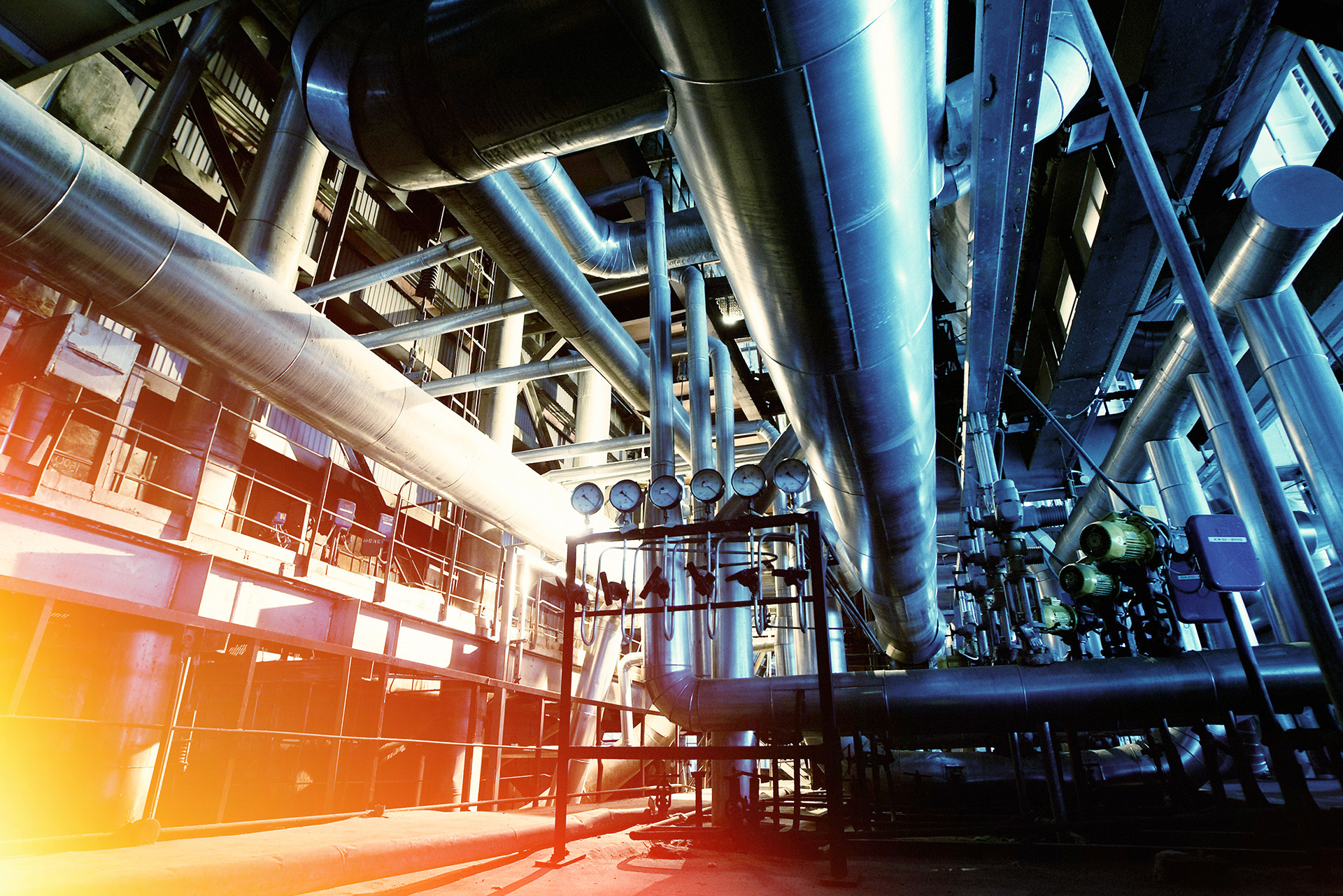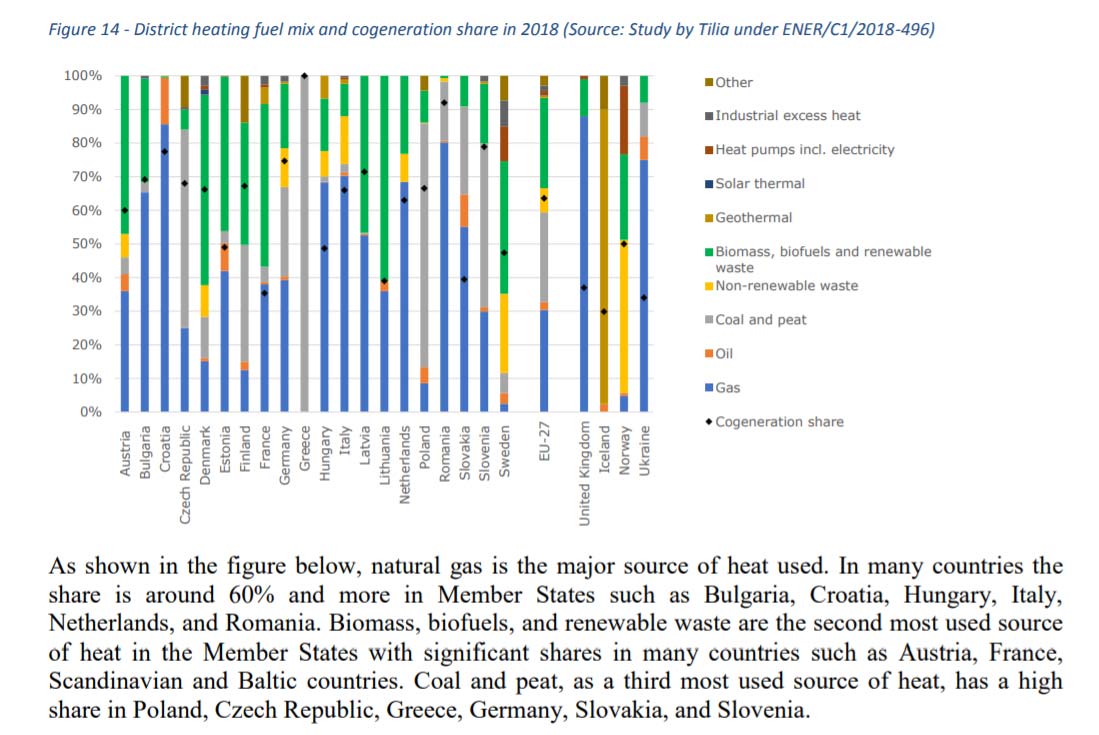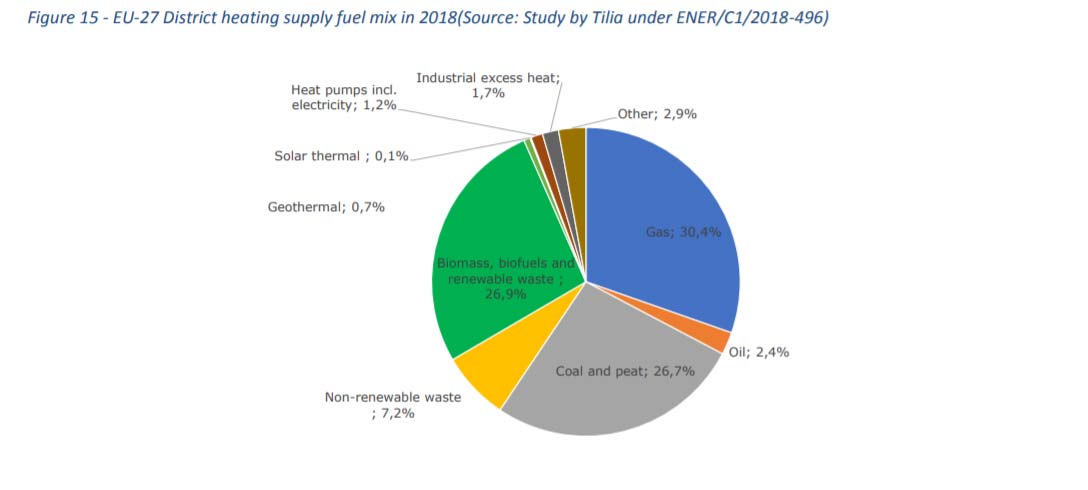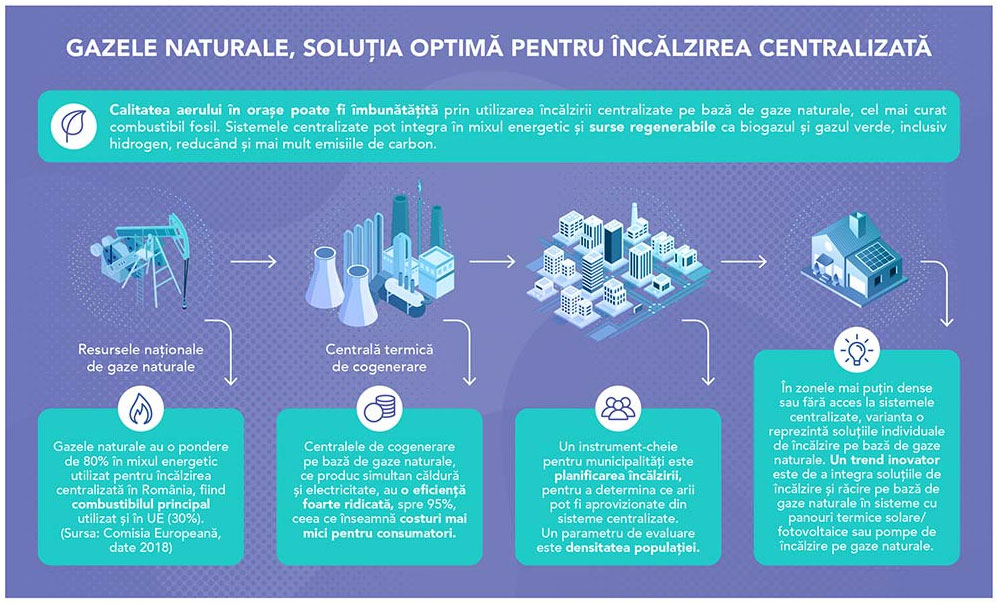In the cold winter months, providing heat is essential, and natural gas has proven over the decades to be a reliable heating source, especially during times when storms have knocked out the power grid. Introducing natural gas into our heating systems has allowed us to heat comfortably while having a reduced environmental impact. Today, natural gas is the most widely used heating fuel in the European Union, including in district heating systems.
At present, natural gas provides almost half of Europe's home heating needs, while heat accounts for about 70% of residential energy consumption (source, HERE).
At EU level, buildings account for the largest share of total heating consumption, with 88% of the need covered by individual boilers and 12% by district heating systems, according to European Commission data. As the data in the graph below shows, natural gas is the main energy source in central heating systems and Romania is among the countries with the highest share, at around 80%.
At aggregate level, natural gas has the highest share in the energy mix used for district heating in the EU-27, i.e. 30.1%, according to the following graph published this year by the European Commission.
Source graphs: ec.europa.eu/
The importance of planning heating systems in urban and rural areas
Given the high environmental impact of the energy sector through greenhouse gas emissions, District heating is seen by the European Commission as a key tool for the energy transition. Air quality in cities will be improved by expanding district heating, with modern and intelligent systemsin urban areas.
"We need to increase investment in new district heating and cooling systems if we are to decarbonise Europe in a cost-effective way. We need more district heating and cooling, lots of energy savings and also, we must distinguish between urban and rural areas. A lot of heat is lost because we don't have district heating networks. Waste heat could cover half of the needs (where available)," notes the European Commission in amended text of the Renewable Energy Directive.
The European Commission also highlights role of planning to ensure optimal heating sources. In Denmark, for example, the first regulation on heat supply was introduced in 1979 and by the mid-1980s almost all Danish municipalities (about 300 at the time) had developed heating plans. The main objective was to determine which areas could be supplied by centralised systems or natural gas and which other areas should continue to use individual heating sources.
A key selection parameter in this planning was energy density in different areas of a municipality. The main approach was that the most densely populated areas should be supplied from district sources. While initially the aim of this planning was to reduce dependence on oil, later it was to reduce the environmental impact, namely the carbon footprint, of heating sources (details, HERE).
Why switching to electricity is not the solution of the moment
The use of natural gas in district heating systems has many advantages. First of all, gas-fired plants have the ability to start quickly when needed. Then, have low carbon and other greenhouse gas emissions. Typically, central heating uses combined heat and power plants, which produce heat and electricity at the same time, and their efficiency is now up to 95% (source, HEREFor residential neighbourhoods or commercial consumers, the following are also available cogeneration micro power plants.
In areas without access to central heating, emissions can be reduced by replacing individual coal or wood-fired boilers with natural gas boilers. Also, "by replacing traditional gas boilers with modern condensing boilers, CO2 emissions can be reduced by up to 20%, improving air quality, as they do not emit particulate emissions, sulphur oxides (SOX) or nitrogen oxides (NOX) compared to other technologies" (source: gasnaturally.eu).
Then, because natural gas is supplied through underground pipelines, natural gas heating systems are reliable on cold winter days when we need heat the most, unlike the electricity grid, which is vulnerable to storms.
"We cannot simply replace the heating load that gas covers by switching to electricity. The gas grid can transfer much more energy to electricity. Any change in policy to favour electrification should take into account the cost and environmental impact of increasing electricity infrastructure. The gas grid is designed to meet the maximum energy requirements of heating. Switching the heating load from gas to the electricity system would require a significant increase in the existing electricity network. The natural gas grid, which of course is underground, provides a reliable and sustainable source of energy with the ability to meet the peaks and gaps in energy demand that heating systems require in the winter.", the Eurogas association also points out (source, HERE).
In this context, widespread adoption of heat pumps, for example, would put pressure on the electricity grid. "If heating in all buildings in Europe were switched to electricity using heat pumps, the peak winter electricity demand would increase by over 60%", according to the report World Energy Outlook (2019) of the International Energy Agency (source, HERE).
Partnership with renewable energy
So natural gas remains a basic fuel for providing heat, and the advantage of district heating is that it can use different heating sources and is not limited to one type of fuel. Another advantage of natural gas is that it is the ideal partner for renewable energy and can be integrated into the grid in a mix with green gas and hydrogen, which will lead to further decarbonisation of district heating systems.
Then the gas industry is constantly innovating to adapt to the need to reduce emissions. Current natural gas heating technologies (boilers, heat pumps, hybrid and micro CHP plants) can operate with renewable gases, but also in partnership with other heating sources such as solar energy. In addition, natural gas can be optimally used in synergy with energy efficiency, which needs to be improved by renovating buildings.
So each energy source has its advantages and disadvantages, which is why it is important to combine and make optimal use of the available sources so that the energy demand of each city, neighbourhood and building is met. And until energy sources are fully decarbonised, natural gas will still play an important role for decades to come.








